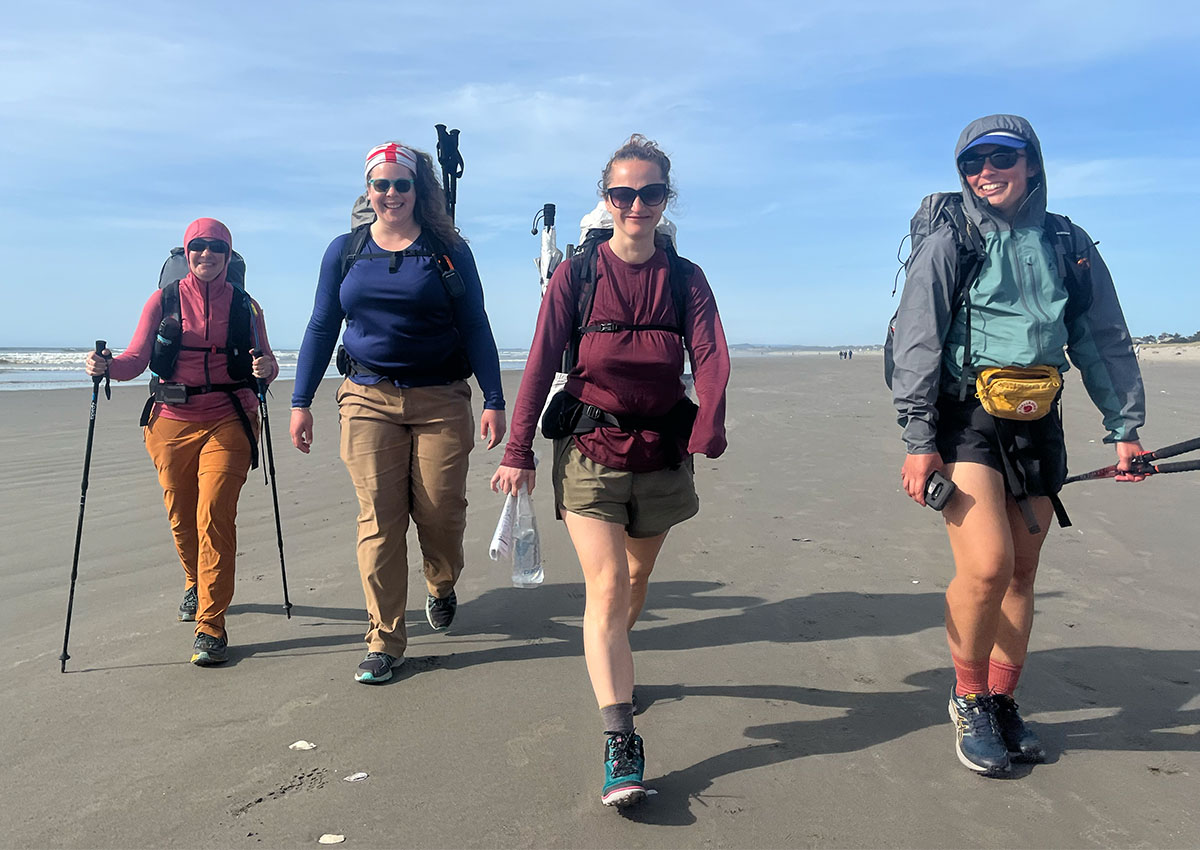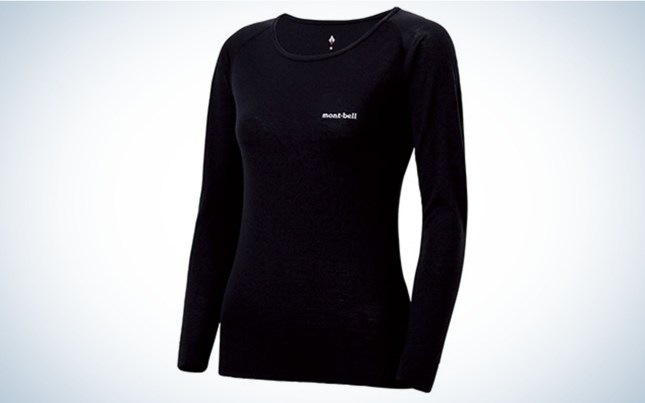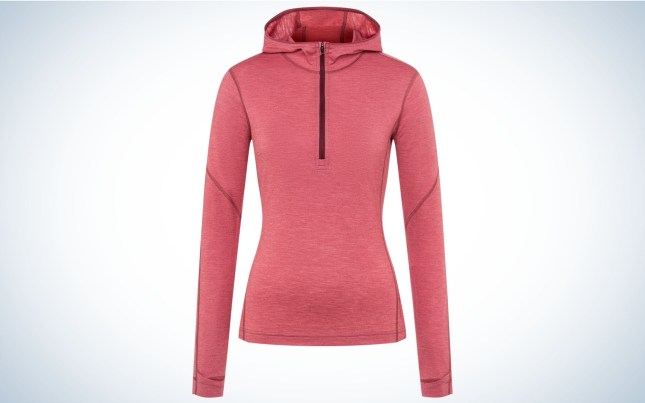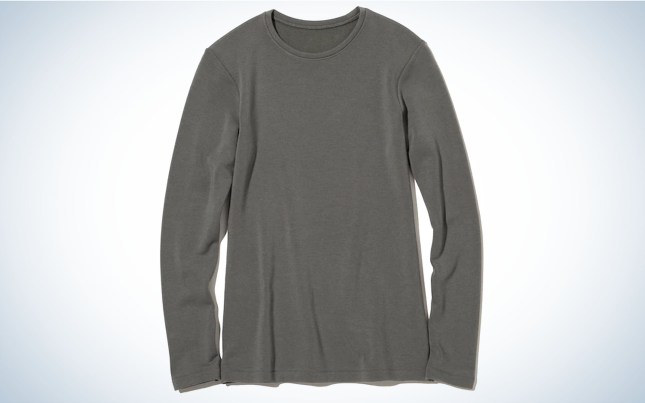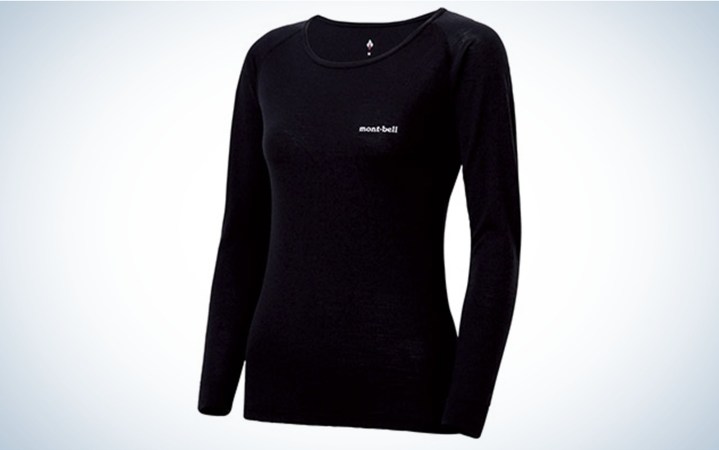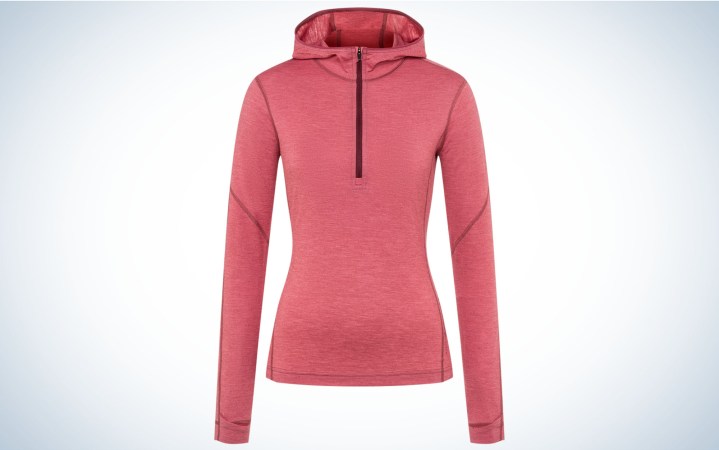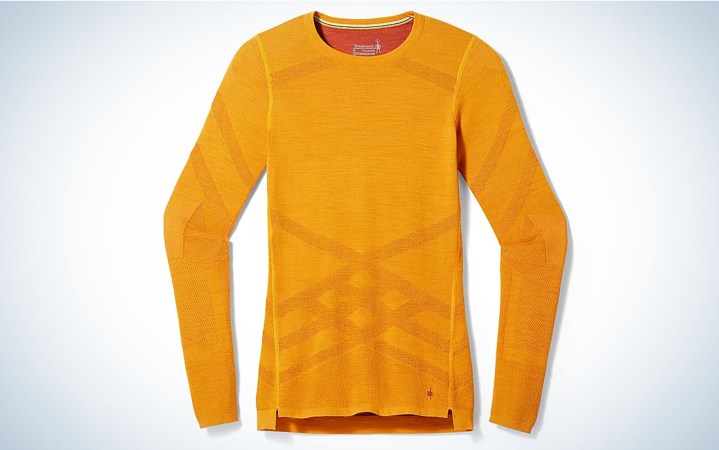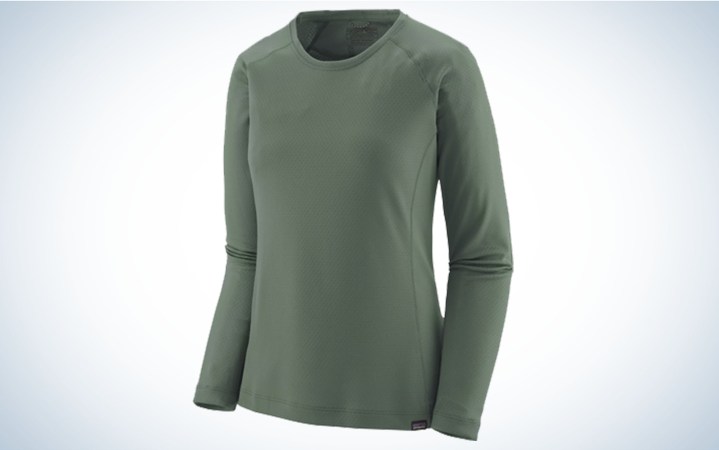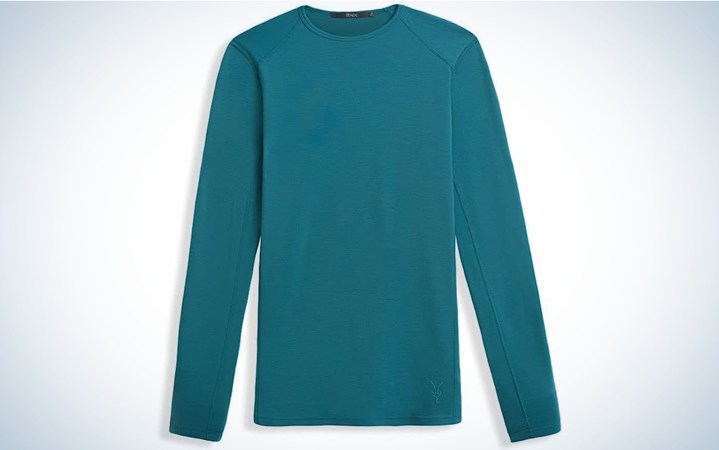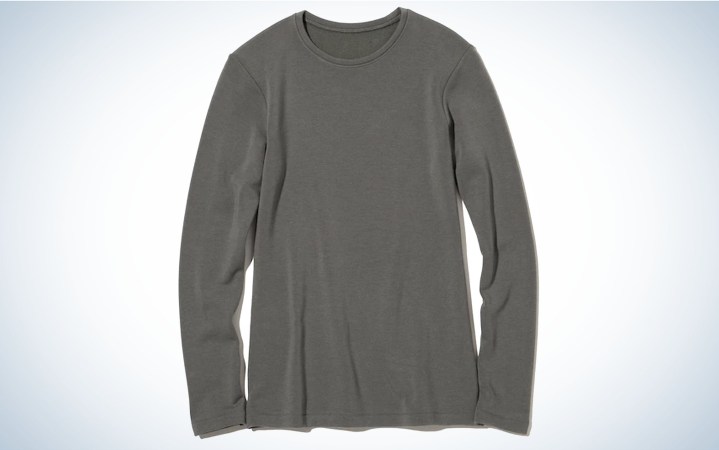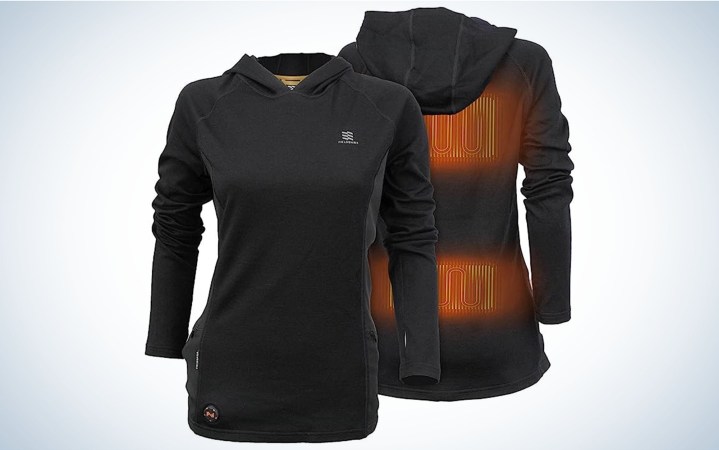We may earn revenue from the products available on this page and participate in affiliate programs. Learn More ›
A quality pair of thermal underwear is one of the best investments you can make. These performance layers maximize warmth, wick away sweat, and disappear under everything from puffer jackets to cashmere sweaters. We tested the best thermal underwear for women from top brands like Ibex, Smartwool, Patagonia, Outdoor Research, Black Diamond, Montbell, Decathlon, Uniqlo, and Kari Traa to see which were best performers for warmth and comfort in a variety of conditions.
- Best Overall: Montbell Super Merino Wool Lightweight
- Best for Hiking: Black Diamond Solution 150 Merino
- Best Ventilation: Smartwool Intraknit
- Best Outer Layer: Patagonia Capilene Midweight
- Best for Cold and Wet: Ibex Woolies 2
- Best Budget: Uniqlo Heattech Ultra Warm
- Heated Thermal Underwear: Fieldsheer Merino Heated Baselayer
How We Tested the Best Thermal Underwear for Women
Five Outdoor Life editors and contributors tested thermal underwear for women over five days while backpacking a section of the Oregon Coast Trail in late April. We were carrying loads between 20 and 30 pounds in the best ultralight backpacks while covering upwards of 15 miles a day. Temperatures ranged from early morning chill in the mid-forties to 80 degrees, giving us insight into how these different thermal underwear layers change as both our body temperatures and the ambient temperature increases.
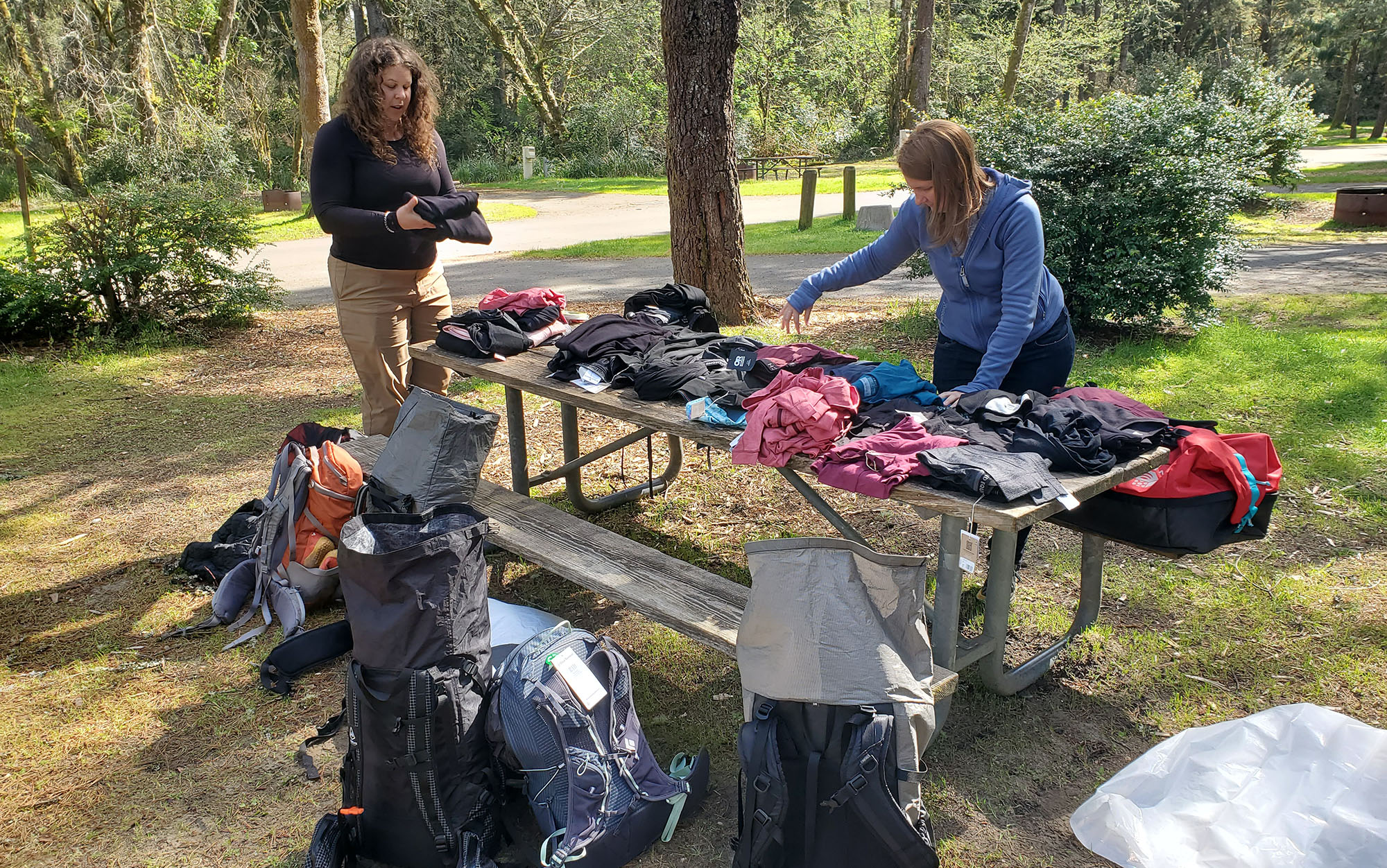
At the end of the trip, each tester took several layers back home to continue testing in both frontcountry and backcountry settings. After months of testing, we evaluated the best performance thermal underwear for a variety of applications.
Best Thermal Underwear for Women: Reviews & Recommendations
Best Overall: Montbell Super Merino Wool Lightweight Shirt
Best Overall
Montbell Super Merino Wool Lightweight Shirt
Key Features
- Fabric Content: 85 percent merino wool, 15 percent polyester
- Weight: 4 ounces
- Available Sizes: S through L
- Pair with Super Merino Wool Lightweight Tights
Pros
- Soft and comfortable
- Lightweight and thin material will layer under almost anything
- Affordably priced
Cons
- Fabric is thin to the point of being sheer
The Montbell Super Merino Wool Lightweight Shirt and Tights had everything we wanted: a soft, comfortable skin feel, great thermoregulation, good fit, and affordable price. Testers noted that it was surprisingly soft given the high percentage of merino wool and that it hugged their body more than other layers we tried. That’s helpful for both quickly wicking sweat away from your skin and reducing bulk when you layer other clothing on top of it.
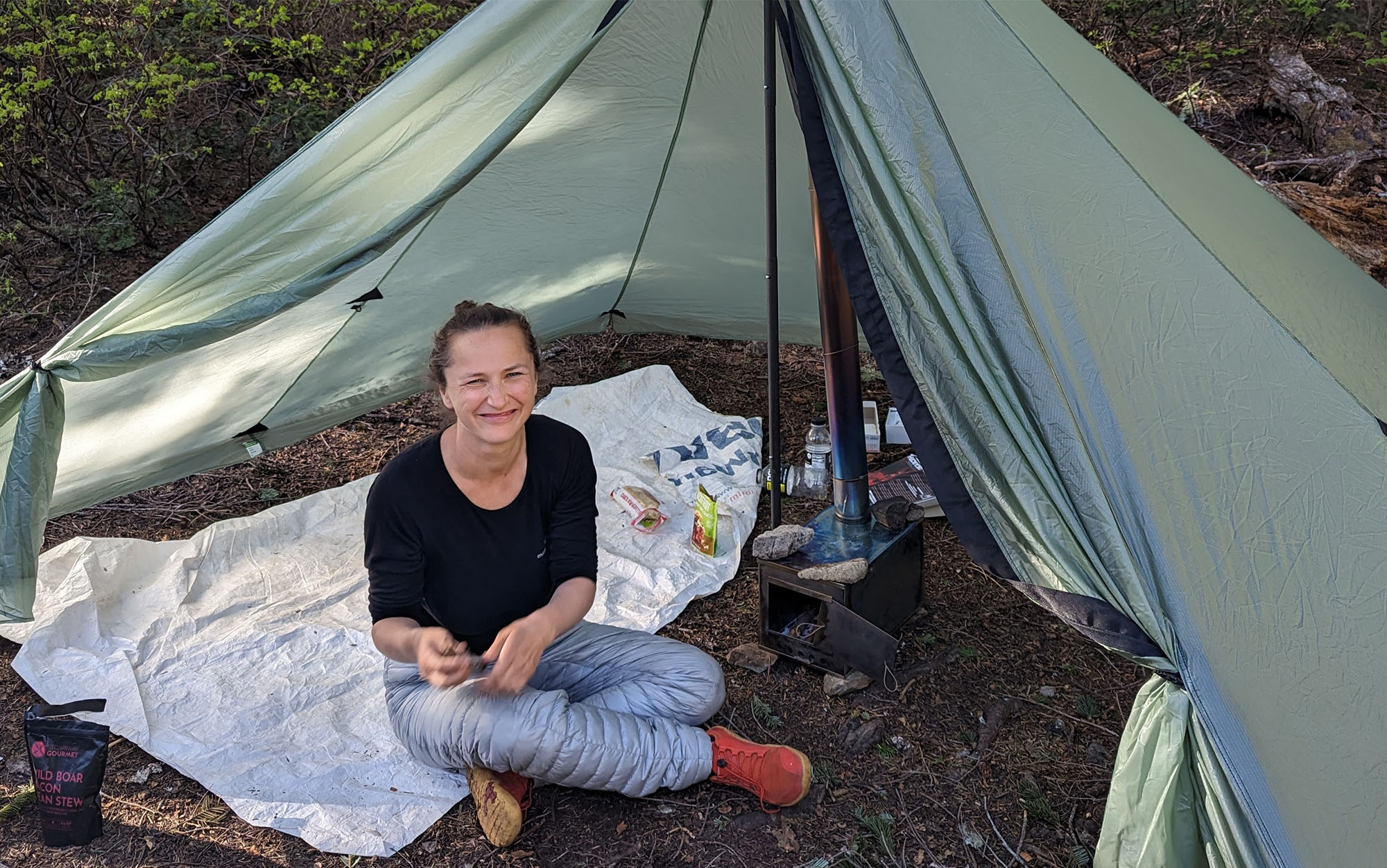
The high merino wool content meant we could go longer between washes with this layer than with the synthetic thermal underwear we tested; but even so, we ended up washing our favorite top frequently over the spring and summer. We’re happy to report that it still looks the same as when we first received it in the mail: no pilling, no stray strings, no holes. This is doubly impressive given that this layer is so thin it’s practically sheer.
Best for Hiking: Black Diamond Solution 150 Merino Half Zip Hoody
Best for Hiking
Black Diamond Solution 150 Merino Half Zip Hoody
Key Features
- Fabric Content: 78 percent merino, 22 percent polyester
- Weight: 6.6 ounces
- Available Sizes: XS through XL
- Pair with Black Diamond Solution 150 Merino Full-Length Bottom
Pros
- Kept us comfortable at a wide range of temperatures
- Thumbholes and hood helped it double as a sun shirt
Cons
- Expensive
Testers were impressed at how well this layer performed across the full spectrum of summer conditions, from alpine snow to humid and hot. “I never overheated or got clammy, even on uphill,” said one tester, who noted that the half zip made it easy to ventilate. The thumbholes and hood also gave our testers excellent coverage, helping to protect their arms and head from sun exposure. Even after multiple days of use (our record was five days between washes), it still felt soft against the skin and was noted to be comparatively more form-fitting than similar layers like the Ibex Woolies Tech or the Outdoor Research Alpine Onset Merino.
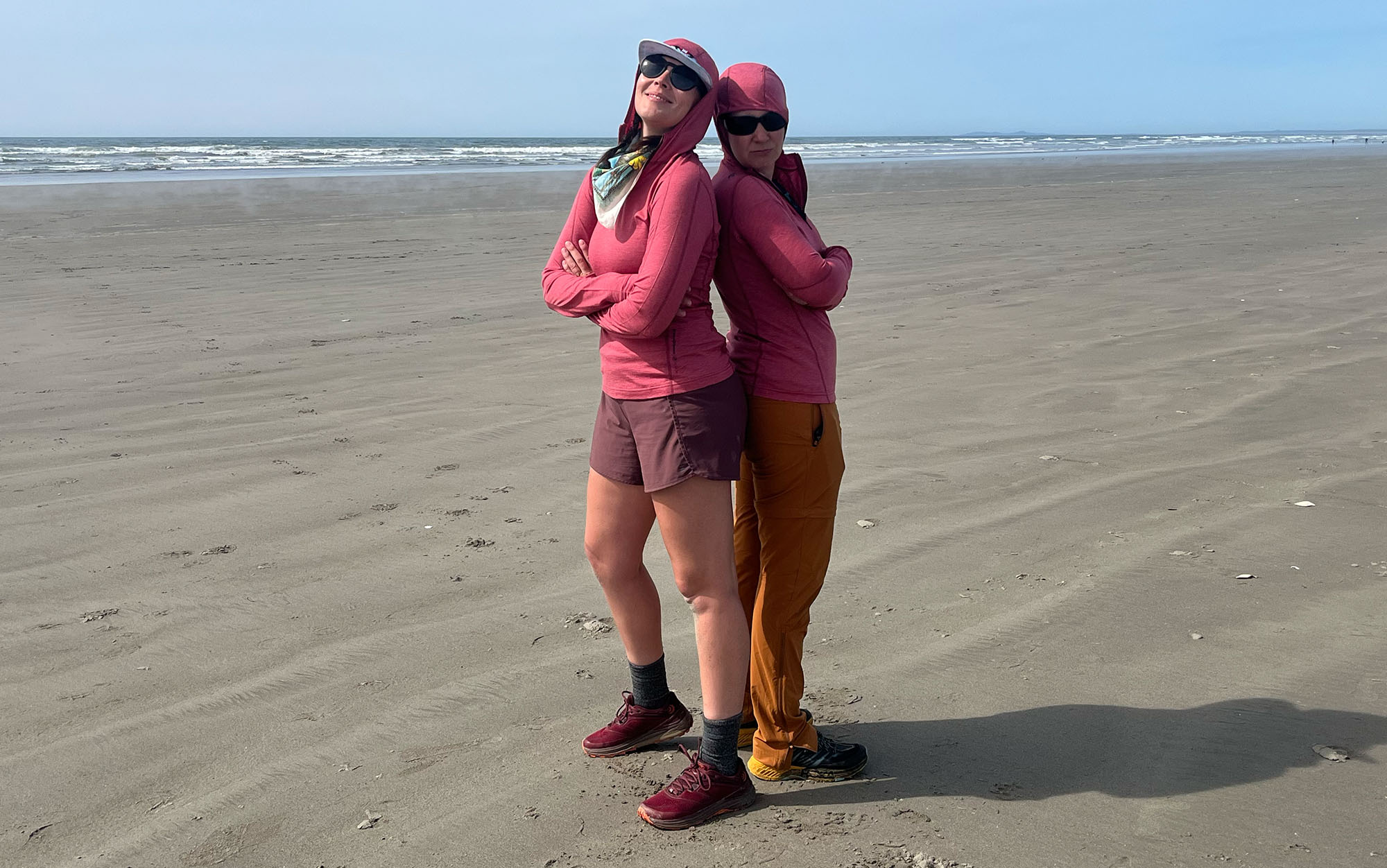
Our Alaska-based tester also noted the knit of this material is just tight enough to keep mosquitoes at bay, something she appreciated when she had twenty on her at a time while hiking in the Denali area in the early summer.
Best Ventilation: Smartwool Intraknit Thermal Merino Crew
Best Ventilation
Smartwool Intraknit Thermal Merino Crew
Key Features
- Fabric Content: 53 percent merino wool, 45 percent polyester, 2 percent elastane
- Weight: 6.4 ounces
- Available Sizes: XS through XL
- Pair with Smartwool Intraknit Thermal Merino Bottom
Pros
- Enough ventilation for our sweatiest testers
- Great fit across a wide range of body types
Cons
- Can become cold when not moving
- Not as soft as our best overall or best hiking pick
- Mesh prone to snagging and pilling
If you need the extra warmth of thermal underwear for women but are concerned that it’ll lead to excessive sweating, then the Smartwool Intraknit top and leggings are the items for you. Our sweatiest tester stayed dry all day while hiking with a full pack along the Oregon Coast Trail in temperatures in excess of seventy degrees. That’s thanks to the body-mapped ventilation zones, where the knit is noticeably porous, allowing the heat and moisture to escape where it accumulates while still keeping the rest of your body warm. Like the Montbell Super Merino Wool and Black Diamond Solution 150 Merino, these layers were form-fitting, with our largest tester noting that both the top and the bottom fit exceptionally well compared to other models we looked at. They noted that the high-waisted bottoms and longer top meant that there were no gaps in the coverage, something they particularly appreciated.
There were a couple of downsides to the Smartwool Intraknit. The first is that our testers found that the ventilation zones were too often a two-way street: If they weren’t generating enough body heat, cold air started to creep back in. The lower-volume ventilation areas were also prone to catching and snagging, meaning that the layer will likely wear out faster than other picks on this list.
Best Outer Layer: Patagonia Capilene Midweight Zip Neck
Best Outer Layer
Patagonia Capilene Midweight Zip Neck
Key Features
- Fabric Content: 100 percent polyester
- Weight: 4.3 ounces
- Available Sizes: XS through XXL
- Pair with Patagonia Capilene Midweight Bottoms
Pros
- Comfortable
- Reasonably affordable
- Easy to throw on over existing clothing
Cons
- Doesn’t layer as well as other thermal underwear options we tested
- No merino wool content
Most of the time, we’re looking for thermal underwear that we can layer under our existing clothes. Whether it’s a wicking shirt going under our puffer jacket or a thin extra layer disappearing under our front country clothes, it’s unlikely that anyone is going to see it. But sometimes all you want is a lightweight thermal layer that can actually perform in cold temperatures to throw on top of the best hiking shirt.
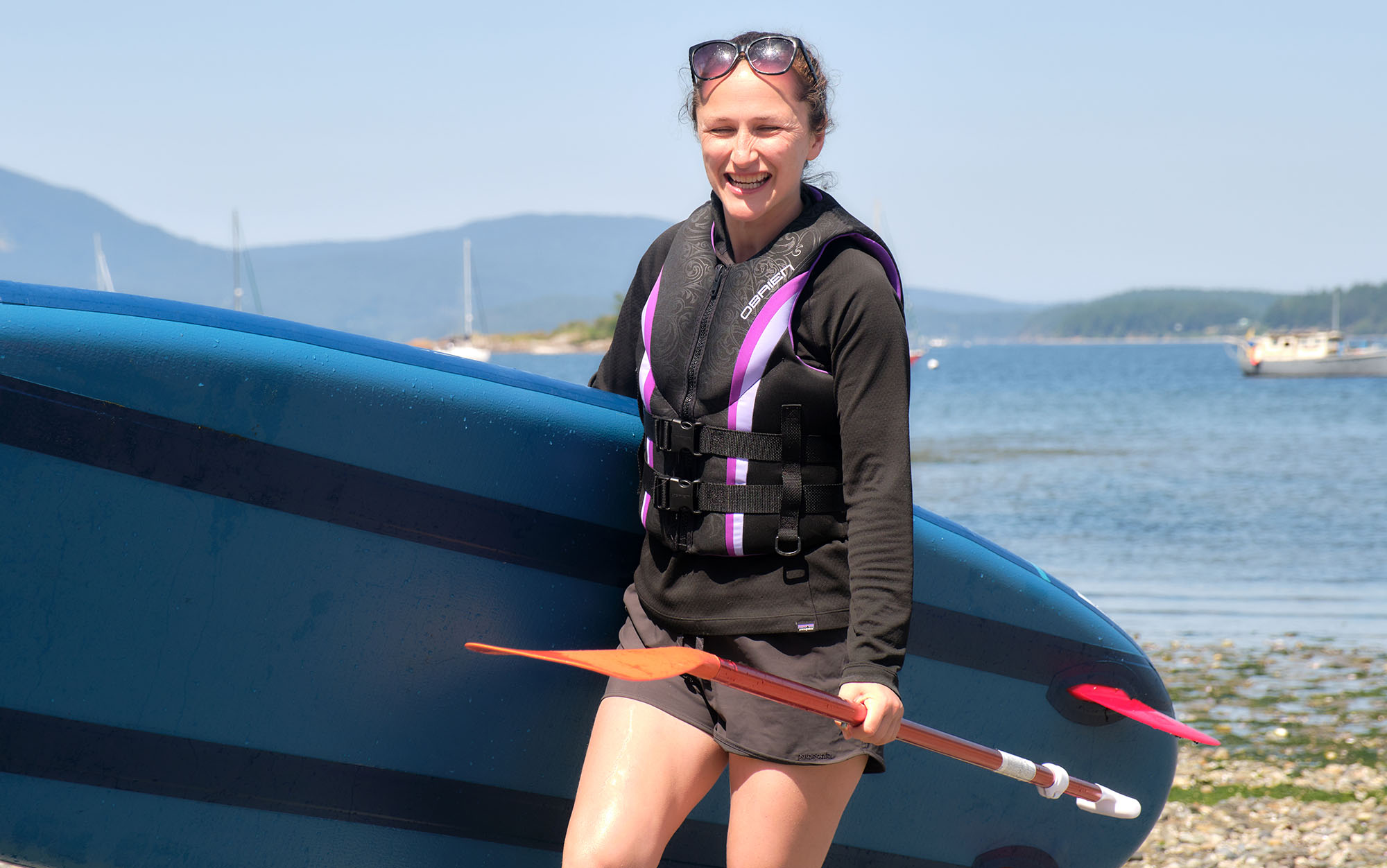
This is what the Patagonia Capilene Midweight is. It looks great while layering over anything. This midweight keeps me warm and wicks sweat. It still looks good after dozens of washes (just a little pilling) and, for a fully synthetic layer, does not particularly hold onto excess smell. Even better: It’s an affordable option for people looking to add a do-it-all layer to their wardrobe.
Best for Cold and Wet: Ibex Woolies 2 Crew
Best for Cold and Wet
Ibex Woolies 2 Crew
Key Features
- Fabric Content: 100 percent merino wool
- Weight: 8.5 ounces
- Available Sizes: XS through XL
- Pair with Ibex Woolies 2 Bottom
Pros
- Very warm
- Great wicking and temperature regulation
Cons
- Expensive
- Don’t layer as well underneath frontcountry clothing
Before I started using the Ibex Woolies 2, it wasn’t uncommon to see me starting a winter trail run in a puffer jacket. Even if it meant that I had to carry it around my waist for four and a half miles, I felt that being warm for the first half mile (at least on my upper body) more than made up for it.
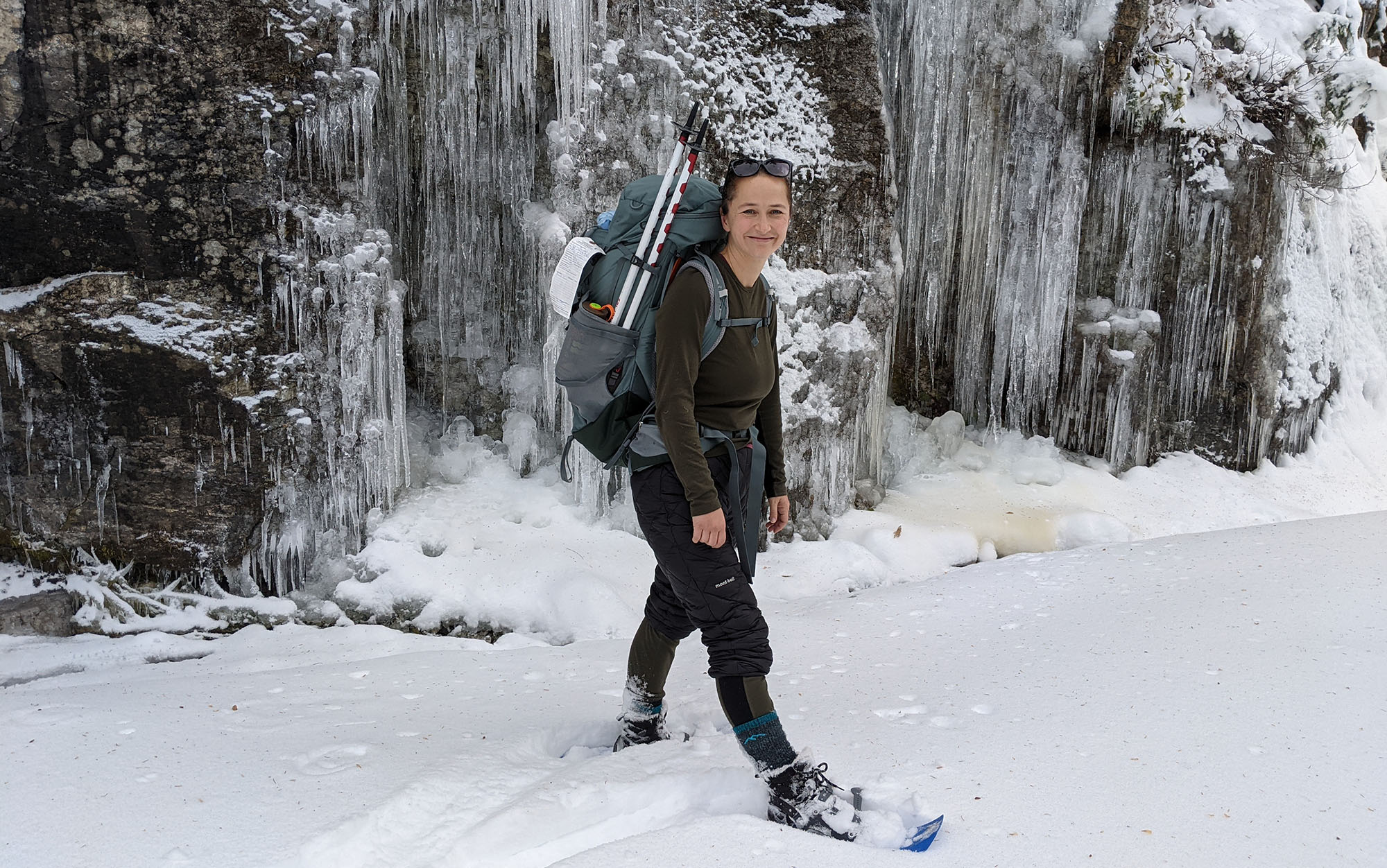
The Ibex Woolies 2 has been a game changer for me. This thick all-merino layer not only keeps me warm at the start of runs in temperatures down to freezing with nothing more than a sports bra and a pair of shorts, they are also great at temperature regulation and moisture management: by the time I’ve warmed up enough take to take off this layer I can trust that it’s because my body is sufficiently warmed up (and dry) to handle the chill of the outside air. The puffer jacket hasn’t made an appearance since I started using these. Even better is that after a full season of regular use they essentially look new with no pilling and no holes: I expect them to last for many, many years of use.
Best Budget: Uniqlo Heattech Ultra Warm Crew Neck Long Sleeve
Best Budget
Uniqlo Heattech Ultra Warm Crew Neck Long Sleeve
Key Features
- Fabric Content: 41 percent acrylic, 37 percent polyester, 18 percent rayon, 4 percent spandex
- Weight: 9.1 ounces
- Available Sizes: XXS through XXL
- Pair with Uniqlo Heattech Ultra Warm Leggings
Pros
- Great skin feel
- Very affordable
- Plenty warm for chilly spring mornings
Cons
- Thicker material than other thermal underwear layers we looked at
Our testers, many of whom identify as running cold, were obsessed with the Uniqlo Heattech Ultra Warm series. While several of us were familiar with Uniqlo’s standard Heattech line (which has been a mainstay of budget thru-hiking for a decade), the Ultra Warm series were some of the most comfortable, and warmest, thermal underwear any of us had ever tried. Our Alaska tester says she plans to “live in these all winter around my cabin” while another hopes that Uniqlo will simply come out with a blanket in this material. The one downside to these layers is that they are fairly thick—plan to layer them under looser clothing for when the temperatures drop down into the thirties and below.
Heated Thermal Underwear: Fieldsheer Merino Heated Baselayer
Heated Thermal Underwear
Fieldsheer Merino Heated Baselayer
Key Features
- Fabric Content: 50 percent merino wool, 40 percent lyocell, 10 percent nylon (shell) 100 percent polyester (lining)
- Weight: 18 ounces (top), 14 ounces (bottoms)
- Available Sizes: XS-2XL
- Battery Life: Up to 10 hours
- Pair with Fieldsheer Merino Heated Baselayer Pant
Pros
- Extra warm
- Hood and thumbholes on sleeves
Cons
- Expensive
- Bottoms are ill fitting
In extreme cold, heated base layers are a dream. The wool provides excellent insulation while small batteries heat up two wired panels on each layer. Simply charge the 4 ounce batteries and slip one into each pocket. On the hooded shirt, the zippered pocket is sewn-in and on the pants a slip pocket on the leg holds the battery and a fold of fabric covers the top. I tested these while night skiing in single digit temperatures. The heat was particularly welcome while seated on a cold, dark ski lift with no protection from the wind.
You can control the heat levels from an app on your phone so you don’t have to dig under a ton of layers to adjust the temperature. The hooded top with thumb holes is comfortable and the heating panels keep my back warm. I wouldn’t wear this layer without the battery or on long hikes though because it’s heavy and you can feel the wires. But the breathable polyester lining is soft while the hollow merino fibers trap the heat.
The pants definitely have room for improvement. They are ill fitting with a low, wide waist and not enough room in the seat. They also fit my 5-foot, 7-inch frame like capris which is okay in ski boots, but if you’re hunting, walking the dog, or otherwise outdoors, wear tall, thick socks to make up for this significant gap in coverage.
Read Next: The Best Heated Vests of 2023
The Rest of the Field
While both the Ibex Woolies Tech and the Outdoor Research Alpine Onset Merino 150 were solid options that performed well in the field, our testers felt their higher price point and looser cut made them less functional as thermal underwear for women. We were particularly surprised with the roominess of the Outdoor Research Alpine Onset Merino 150 (size down on this once if you are in between sizes). That being said, both are great layers that will keep you warm in a variety of conditions if you happen to find them on sale.
We were excited to try women’s brand Kari Traa, but were ultimately disappointed by their performance. They were surprisingly scratchy, to the point that several testers took them off and risked being cold rather than continue to wear them. We were also disappointed at the amount of packaging that their layers came in, easily the most excessive (and difficult to get into) of anything we looked at.
Decathlon makes a wide array of lower price gear aimed at the entry-level market, so we were curious to see how their merino base layers would stack up. Unfortunately, our testers found them noticeably less comfortable than others we tested. Given how close the price point is to our best overall pick, we think most people will be happier spending slightly more on the quality of the Montbells, while anyone after a true budget pick will be better served by the extremely low cost of the synthetic Uniqlo Heattech Ultra Warm series.
Things to Consider Before Buying Thermal Underwear for Women
Material
The best material for thermal underwear is merino wool, as wool is known for its thermal regulation, retaining heat significantly better than synthetic fibers. That’s because merino wool is naturally semi-hollow, which allows it to trap heat without adding weight. Another benefit to wool in thermal underwear is that the naturally occurring lanolin repels odor. Merino does not pick up smells over time (the way synthetics so often do), and our testers found that that they can be worn multiple days in a row without stinking. While modern wool treatments make it more comfortable than the scratchy wool sweaters of yore (merino itself also has naturally smoother fibers) it is still not as comfortable as other fibers. To add comfort (and durability), merino is frequently paired with synthetic fibers like nylon and polyester, as well as elastane or spandex to give it a bit of stretch.
Read Next: The Best Wool Socks
Features
Our testers looked at layers with a range of features, including quarter zips, thumbholes at the sleeves, and hoods. If you are planning to wear your thermal underwear under an existing layer, it’s best to avoid additional features such as these as they will add unnecessary bulk (and potentially cost). However, if you plan to use your thermal underwear as an active base layer for hiking, then these features can add extra warmth and protection.
Thickness
Layering thick material underneath your existing clothing can be uncomfortable. Look for a thin material with good skin feel when making your selection.
Price
The best thermal underwear is typically made from fine-grade merino wool, which can make it fairly expensive. Synthetic thermal underwear will typically cost less but can pick up and retain odors over time.
FAQs
Our testers have worn merino wool thermal underwear for women for up to five days at a time without noticing any odor. Thermal underwear that incorporate synthetics, or are all synthetic, will pick up and hold onto odors much more easily.
In our experience, thermals work best if they are fairly snug against the skin. This helps to maximize the insulation and, in the case of merino thermal underwear, enhance their ability to wick moisture away from your skin if you start to sweat.
If you get cold in the fall and winter months—our testers certainly do—then thermal underwear can make a big difference in how warm your core temperature is. Some of the best layers are able to accomplish this without adding noticeable bulk to your outfit.
Read Next: Best Underwear for Hiking
Final Thoughts
If you consistently find yourself cold when you’re outside in the fall and winter months, then it may be time to consider picking up a couple of pairs of thermal underwear. Our group of five women testers took these out backpacking for several days over the spring with temperatures plunging into the forties and consistently high humidity. We’ve rounded up our favorite picks from that trip (many of which we continue to wear in our frontcountry and backcountry life) to help keep you warm in the chilly months to come:
- Best Overall: Montbell Super Merino Wool Lightweight
- Best for Hiking: Black Diamond Solution 150 Merino
- Best Ventilation: Smartwool Intraknit
- Best Outer Layer: Patagonia Capilene Midweight
- Best for Cold and Wet: Ibex Woolies 2
- Best Budget: Uniqlo Heattech Ultra Warm
- Heated Thermal Underwear: Fieldsheer Merino Heated Baselayer
